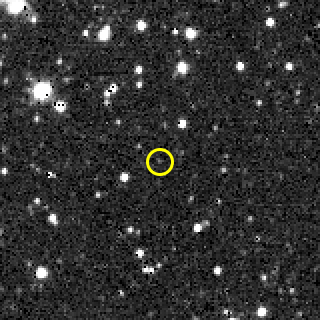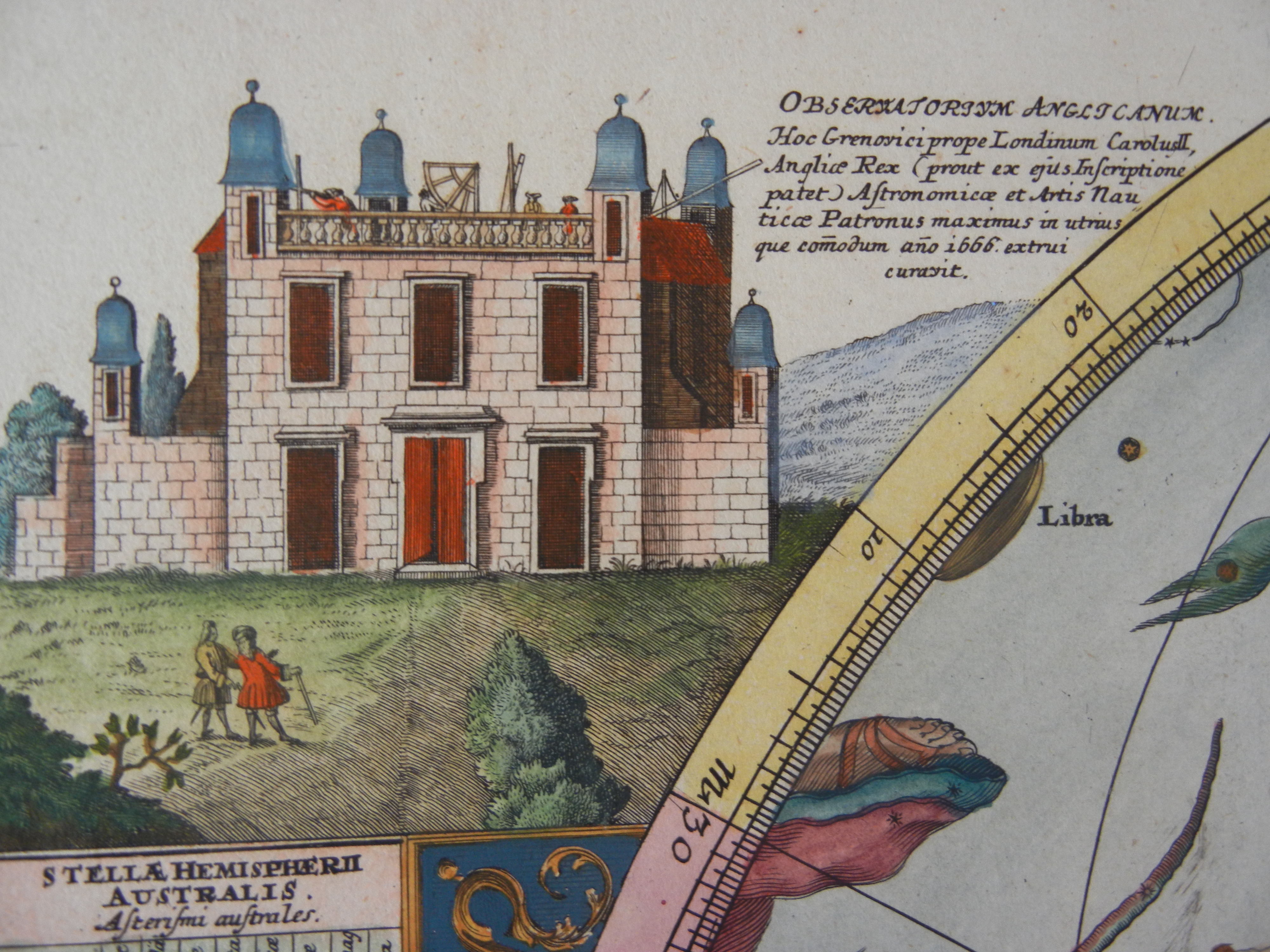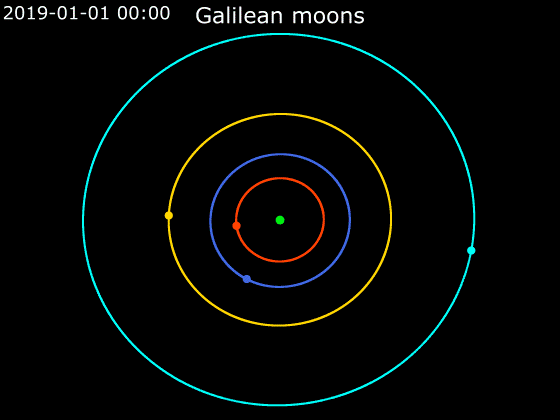|
Pasiphae (moon)
Pasiphae , formerly spelled Pasiphaë, is a retrograde irregular satellite of Jupiter. It was discovered in 1908 by Philibert Jacques Melotte and later named after the mythological Pasiphaë, wife of Minos and mother of the Minotaur from Greek legend. The moon was first spotted on a plate taken at the Royal Greenwich Observatory on the night of 28 February 1908. Inspection of previous plates found it as far back as January 27. It received the provisional designation , as it was not clear whether it was an asteroid or a moon of Jupiter. The recognition of the latter case came by April 10. Pasiphae did not receive its present name until 1975; before then, it was simply known as . It was sometimes called "Poseidon" between 1955 and 1975. Orbit Pasiphae orbits Jupiter on a high eccentricity and high inclination retrograde orbit. It gives its name to the Pasiphae group, irregular retrograde moons orbiting Jupiter at distances ranging between 22.8 and 24.1 million km, and wit ... [...More Info...] [...Related Items...] OR: [Wikipedia] [Google] [Baidu] |
Pasithee (moon)
Pasithee , also known as , is a retrograde irregular satellite of Jupiter. It was discovered by a team of astronomers from the University of Hawaii led by Scott S. Sheppard in 2001, and given the temporary designation .MPEC 2002-J54: ''Eleven New Satellites of Jupiter'' May 15, 2002 (discovery and ephemeris) Pasithee is about 2 kilometres in diameter, and orbits Jupiter at an average distance of 23,307,000 km in 711.12 days, at an of 166° to the (164° to Jupiter's equator), in a [...More Info...] [...Related Items...] OR: [Wikipedia] [Google] [Baidu] |
Royal Greenwich Observatory
The Royal Observatory, Greenwich (ROG; known as the Old Royal Observatory from 1957 to 1998, when the working Royal Greenwich Observatory, RGO, temporarily moved south from Greenwich to Herstmonceux) is an observatory situated on a hill in Greenwich Park in south east London, overlooking the River Thames to the north. It played a major role in the history of astronomy and navigation, and because the Prime Meridian passed through it, it gave its name to Greenwich Mean Time, the precursor to today's Coordinated Universal Time (UTC). The ROG has the IAU observatory code of 000, the first in the list. ROG, the National Maritime Museum, the Queen's House and the clipper ship '' Cutty Sark'' are collectively designated Royal Museums Greenwich. The observatory was commissioned in 1675 by King Charles II, with the foundation stone being laid on 10 August. The old hilltop site of Greenwich Castle was chosen by Sir Christopher Wren, a former Savilian Professor of Astronomy; as ... [...More Info...] [...Related Items...] OR: [Wikipedia] [Google] [Baidu] |
Infrared
Infrared (IR; sometimes called infrared light) is electromagnetic radiation (EMR) with wavelengths longer than that of visible light but shorter than microwaves. The infrared spectral band begins with the waves that are just longer than those of red light (the longest waves in the visible spectrum), so IR is invisible to the human eye. IR is generally (according to ISO, CIE) understood to include wavelengths from around to . IR is commonly divided between longer-wavelength thermal IR, emitted from terrestrial sources, and shorter-wavelength IR or near-IR, part of the solar spectrum. Longer IR wavelengths (30–100 μm) are sometimes included as part of the terahertz radiation band. Almost all black-body radiation from objects near room temperature is in the IR band. As a form of EMR, IR carries energy and momentum, exerts radiation pressure, and has properties corresponding to both those of a wave and of a particle, the photon. It was long known that fires e ... [...More Info...] [...Related Items...] OR: [Wikipedia] [Google] [Baidu] |
Elara (moon)
Elara is a Retrograde and prograde motion, prograde Irregular moon, irregular natural satellite, satellite of Jupiter. It was discovered by Charles Dillon Perrine at Lick Observatory in 1905 in photographs taken with the 36" Crossley reflecting telescope which he had recently rebuilt. It is the eighth-largest moon of Jupiter and is named after Elara (mythology), Elara, one of Zeus's lovers and the mother of the giant Tityos. Elara did not receive its present name until 1975; before then, it was simply known as . It was sometimes called "Hera" between 1955 and 1975. It has a mean radius of just , thus it is 2% of the size of Europa (moon), Europa. However, it is half the size of Himalia (moon), Himalia, so it is the second-biggest moon in the Himalia group. It might be a captured type C or D asteroid, for it reflects very little light. Elara belongs to the Himalia group, moons orbiting between 11 and 13 Orders of magnitude (length)#1 gigametre, gigametres from Jupiter at an ... [...More Info...] [...Related Items...] OR: [Wikipedia] [Google] [Baidu] |
Himalia (moon)
Himalia (), also known as Jupiter VI, is the largest irregular satellite of Jupiter. With a diameter of at least , it is the sixth largest Jovian satellite, after the four Galilean moons and Amalthea. It was discovered by Charles Dillon Perrine at the Lick Observatory on 3 December 1904 and is named after the nymph Himalia, who bore three sons of Zeus (the Greek equivalent of Jupiter). It is one of the largest planetary moons in the Solar System not imaged in detail, and the third largest not imaged in detail within the orbit of Neptune. Discovery Himalia was discovered by Charles Dillon Perrine at the Lick Observatory on 3 December 1904 in photographs taken with the 36-inch Crossley reflecting telescope which he had recently rebuilt. ; ; ; Himalia is Jupiter's most easily observed small satellite; though Amalthea is brighter, its proximity to the planet's brilliant disk makes it a far more difficult object to view. Name Himalia is named after the nymph Himalia ... [...More Info...] [...Related Items...] OR: [Wikipedia] [Google] [Baidu] |
Secular Resonance
A secular resonance is a type of orbital resonance between two bodies with synchronized precessional frequencies. In celestial mechanics, secular refers to the long-term motion of a system, and resonance is periods or frequencies being a simple numerical ratio of small integers. Typically, the synchronized precessions in secular resonances are between the rates of change of the argument of the periapses or the rates of change of the longitude of the ascending nodes of two system bodies. Secular resonances can be used to study the long-term orbital evolution of asteroids and their families within the asteroid belt. Description Secular resonances occur when the precession of two orbits is synchronised (a precession of the perihelion, with frequency g, or the ascending node, with frequency s, or both). A small body (such as a small Solar System body) in secular resonance with a much larger one (such as a planet) will precess at the same rate as the large body. Over relatively sh ... [...More Info...] [...Related Items...] OR: [Wikipedia] [Google] [Baidu] |
Callisto (moon)
Callisto ( ) is the second-largest moon of Jupiter, after Ganymede. In the Solar System it is the third-largest moon after Ganymede and Saturn's largest moon Titan, and nearly as large as the smallest planet Mercury. Callisto is, with a diameter of , roughly a third larger than Earth's Moon and orbits Jupiter on average at a distance of , which is about five times further out than the Moon orbiting Earth. It is the outermost of the four large Galilean moons of Jupiter, which were discovered in 1610 with one of the first telescopes, and is today visible from Earth with common binoculars. The surface of Callisto is the oldest and most heavily cratered in the Solar System. Its surface is completely covered with impact craters. It does not show any signatures of subsurface processes such as plate tectonics or volcanism, with no signs that geological activity in general has ever occurred, and is thought to have evolved predominantly under the influence of impacts. Promine ... [...More Info...] [...Related Items...] OR: [Wikipedia] [Google] [Baidu] |
Apsis
An apsis (; ) is the farthest or nearest point in the orbit of a planetary body about its primary body. The line of apsides (also called apse line, or major axis of the orbit) is the line connecting the two extreme values. Apsides pertaining to orbits around different bodies have distinct names to differentiate themselves from other apsides. Apsides pertaining to geocentric orbits, orbits around the Earth, are at the farthest point called the ''apogee'', and at the nearest point the ''perigee'', like with orbits of satellites and the Moon around Earth. Apsides pertaining to orbits around the Sun are named ''aphelion'' for the farthest and ''perihelion'' for the nearest point in a heliocentric orbit. Earth's two apsides are the farthest point, ''aphelion'', and the nearest point, ''perihelion'', of its orbit around the host Sun. The terms ''aphelion'' and ''perihelion'' apply in the same way to the orbits of Jupiter and the other planets, the comets, and the asteroids of t ... [...More Info...] [...Related Items...] OR: [Wikipedia] [Google] [Baidu] |
Carolyn C
Carolyn is a female given name, a variant of Caroline. Other spellings include Carolin, Karolyn, Carolyne, Carolynn or Carolynne. Caroline itself is one of the feminine forms of Charles. List of notable people * Carolyn Bennett (born 1950), Canadian politician * Carolyn Bertozzi (born 1966), American chemist and Nobel laureate * Carolyn Bertram (born 1976), Canadian politician *Carolyn Bessette-Kennedy (1966–1999), wife of John F. Kennedy, Jr. * Carolyn Beug (1952–2001), American filmmaker * Carolyn Bolivar-Getson (born 1964), Canadian politician * Carolyn Brown (choreographer) (born 1927), American dancer, choreographer, and writer * Carolyn Brown (newsreader), English newsreader *Carolyn Cassady (1923–2013), American writer and wife of Neal Cassady * Carolyn Caton, American politician from Missouri * C. J. Cherryh (Carolyn Janice Cherryh; born 1942), American science fiction and fantasy writer * Carolyn Chiechi (born 1943), judge of the United States Tax Court *Caro ... [...More Info...] [...Related Items...] OR: [Wikipedia] [Google] [Baidu] |
David C
David (; , "beloved one") was a king of ancient Israel and Judah and the third king of the United Monarchy, according to the Hebrew Bible and Old Testament. The Tel Dan stele, an Aramaic-inscribed stone erected by a king of Aram-Damascus in the late 9th/early 8th centuries BCE to commemorate a victory over two enemy kings, contains the phrase (), which is translated as " House of David" by most scholars. The Mesha Stele, erected by King Mesha of Moab in the 9th century BCE, may also refer to the "House of David", although this is disputed. According to Jewish works such as the '' Seder Olam Rabbah'', '' Seder Olam Zutta'', and '' Sefer ha-Qabbalah'' (all written over a thousand years later), David ascended the throne as the king of Judah in 885 BCE. Apart from this, all that is known of David comes from biblical literature, the historicity of which has been extensively challenged,Writing and Rewriting the Story of Solomon in Ancient Israel; by Isaac Kalimi; page 3 ... [...More Info...] [...Related Items...] OR: [Wikipedia] [Google] [Baidu] |
Scott S
Scott may refer to: Places Canada * Scott, Quebec, municipality in the Nouvelle-Beauce regional municipality in Quebec * Scott, Saskatchewan, a town in the Rural Municipality of Tramping Lake No. 380 * Rural Municipality of Scott No. 98, Saskatchewan United States * Scott, Arkansas * Scott, Georgia * Scott, Indiana * Scott, Louisiana * Scott, Missouri * Scott, New York * Scott, Ohio * Scott, Wisconsin (other) (several places) * Fort Scott, Kansas * Great Scott Township, St. Louis County, Minnesota * Scott Air Force Base, Illinois * Scott City, Kansas * Scott City, Missouri * Scott County (other) (various states) * Scott Mountain (other) (several places) * Scott River, in California * Scott Township (other) (several places) Elsewhere * 876 Scott, minor planet orbiting the Sun * Scott (crater), a lunar impact crater near the south pole of the Moon *Scott Conservation Park, a protected area in South Australia Lists * Scott ... [...More Info...] [...Related Items...] OR: [Wikipedia] [Google] [Baidu] |






